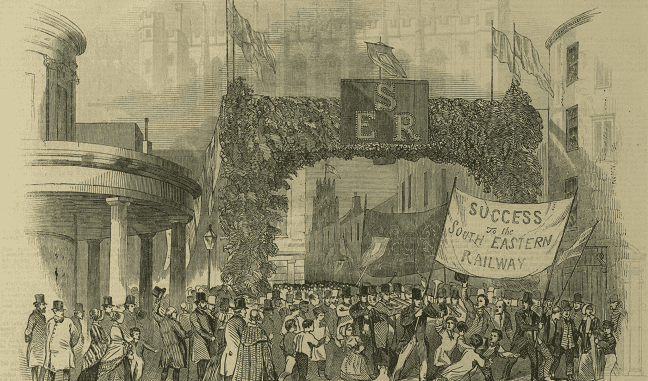
By Richard West – Founder of The Chaucer Education Project
Easter Monday April 13th, 1846, was a cause for celebration in the City of Canterbury and in the town of Ramsgate.
The occasion being celebrated was the opening of the South Eastern Railway’s Canterbury to Ramsgate extension of the branch line from Ashford, just over nine weeks after the opening of the Ashford to Canterbury section.
At 11.30am, a special train departed from the Bricklayers’ Arms terminus in London on the 67 mile journey to Ashford. The train consisted of seven first-class carriages and was hauled by the locomotive “Shakespeare”, which arrived at Ashford in under two hours.
Special guests conveyed on the journey included directors of the railway company: Chairman James Macgregor; Deputy Chairman Viscount Torrington; the Right Honourable Stephen Lushington, former MP for Canterbury; and three members of Parliament: William Bodkin, one of two MPs for Rochester; George Dodd, one of two MPs for Maidstone; and William Feilden, one of two MPs for Blackburn. Influential shareholders also travelled on the train.
Crowds loudly cheered the train as it passed towns and villages.
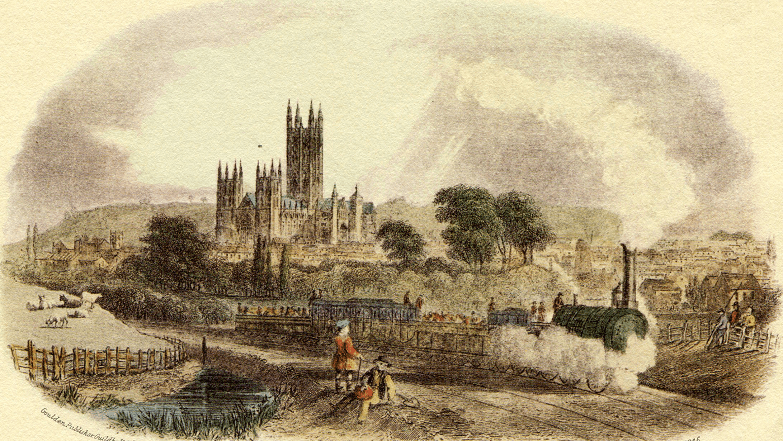
The directors of the railway company had arranged a long, free tourist excursion train from Ramsgate to Canterbury, to enable several hundred people to visit. The free tourist excursion train arrived in the city almost simultaneously with the arrival of the special train from London.
The contract to build the branch line from Ashford to Canterbury, Ramsgate and Margate was awarded to Miller & Blackie of Liverpool in September 1844. Superintending engineers were Joseph Cubitt and W. R. Forde. The railway line was built to provide a double track from Ashford to Canterbury and a single track onwards to Ramsgate and Margate.
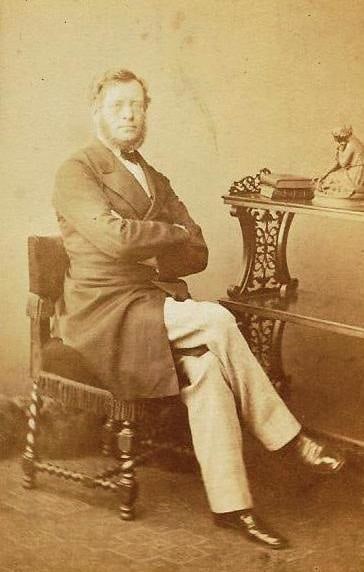
Photo credit: public domain.
All bridges were built to accommodate a double track throughout the entire route, to enable a second line to be added later if there was sufficient demand for use to justify the additional cost of construction and the facilities required.
The 15 and three-quarter mile long extension from Canterbury to Ramsgate was constructed in 15 months and within budget, at an average cost of £15,000 per mile*. The route was mainly through flat countryside, with a gradient of one in 264 for the first 13 miles of the route from Canterbury, after which the gradient rose to one in 100 where it passed through chalk for the remaining distance. The only intermediate station was at Minister, 11 miles from Canterbury.
The Ramsgate terminus was built in the parish of St Lawrence, where a festival atmosphere had been created to greet the special train, with flags flying, guns firing from the pier head and musicians playing.
At 4pm, a dinner was held for the railway company directors, their friends and 150 invited gentlemen guests at the Albion Hotel, presided over by the town deputy S. Sackett. After the meal, toasts were raised.
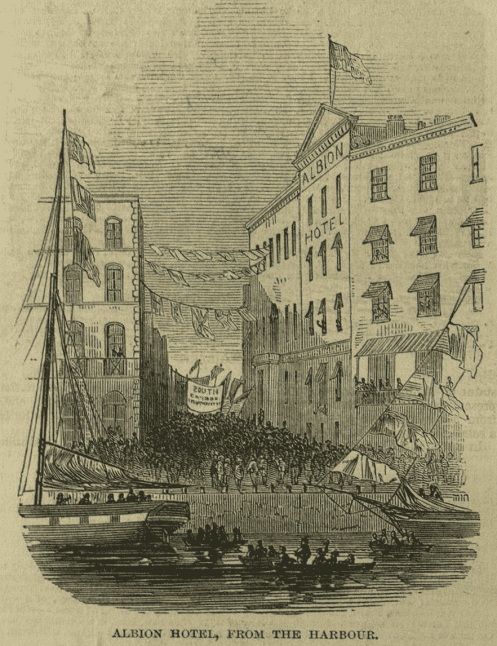
Photo credit: Illustrated London News Saturday April 18th 1846 Edition.
Company chairman James Macgregor proposed the health of the Archbishop of Canterbury, William Howley. In response, the Reverend J. Snowden returned thanks and expressed his earnest prayer that “Heaven might speed and prosper the Canterbury pilgrims journeying by the South Eastern trains; and that all the well-founded and legitimate expectations of those who were concerned in the great undertaking they were assembled that night to celebrate might be abundantly realised.”
In responding to the toast, James Macgregor spoke about the great benefits likely to accrue to the townspeople of Ramsgate and the community at large, not least of all from continental travellers. He mentioned that the South Eastern Railway had formed the South Eastern and Continental Steam Packet Company, whose steam boats would arrive in Ramsgate Harbour with greater regularity than mail coaches had achieved, improving communication with the northern states of Europe.
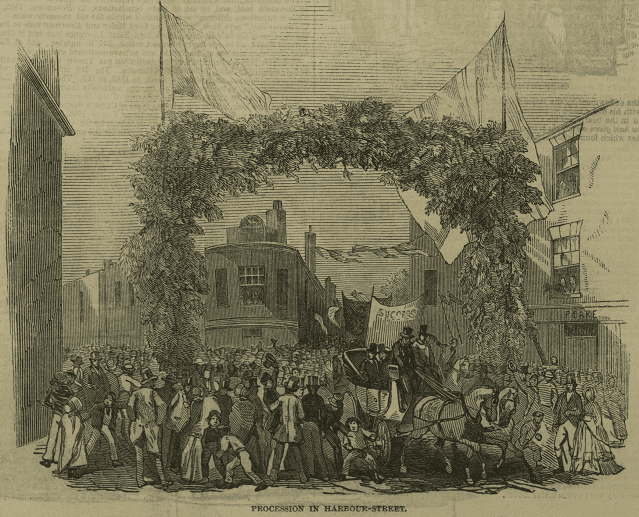
During the course of the dinner, the company’s steam ship Princess Mary arrived in Ramsgate Harbour and was greeted with a salvo of artillery.
After the dinner, the return special train departed around 9pm and arrived back in London at 1.30am the following morning, having been delayed at intermediate stations.
*Line construction cost £15,000 per mile in 1846, equating to £1,860,619 per mile in 2021. Inflation averaged 2.8% a year throughout.
To read more articles from The Chaucer Education Project, go online to chaucer.university

